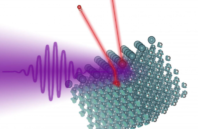According to scientists at the University of Vienna (TU Wien), it is now possible to measure the photoelectric effect. The TU Wien team, together with research groups from Garching, Munich, and Berlin, determined the duration of the photoelectric effect using a tungsten surface.
When light falls on certain materials, electrons are released from their surface. In attoseconds, an electron from the material will absorb a photon, “jump” into another state, and leave the surface. This phenomenon, or photoelectric effect, is so fast that until now it has mostly been regarded as instantaneous.
While scientists have been able to determine the time interval between different quantum jumps and show that these different jumps take different amounts of time, until now it has only been possible to determine time differences, not the absolute duration of the process.
Using the atomic chronoscope method, which references all measured timings to the moment of light-pulse arrival, the researchers were able to determine the absolute timing of the photoelectric effect.

 (585) 768-2513
(585) 768-2513

